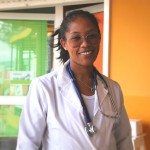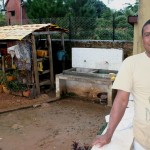
January 2017—The crowd had swelled to about 30 people. All of them were young girls and mothers. Some already carried a baby in their arms. They were intently listening to the community health educator explain the different methods of family planning available at the health center.
April 2016—A panic-stricken woman burst into the community health volunteer’s hut in the village of Tanambao Marofototra in southwestern Madagascar with her newborn baby boy in her arms. Terrified, she explained that her child was severely ill. He was having trouble breathing; his lips were beginning to turn blue.

Not too long ago, residents in eastern Madagascar gained access to safe drinking water in their own homes—a development that has significantly improved their health and daily routine, not to mention the convenience of onsite plumbing in the small village.
April 2014—White smoke is spiraling up into the sky as dusk quickly falls in the village. In one of the huts, Radiata Ibrahim, a young unmarried woman, has just put the cooking pot containing the evening meal on the stove. She is far busier than before now that she has embarked on a new and rewarding activity.
April 2014—On a hill amidst unkempt grass and wild vegetation on the outskirts of Madagascar’s capital, Antananarivo, stands a shabby-looking wooden hut surrounded by banana trees and other makeshift shelters.








Comment
Make a general inquiry or suggest an improvement.